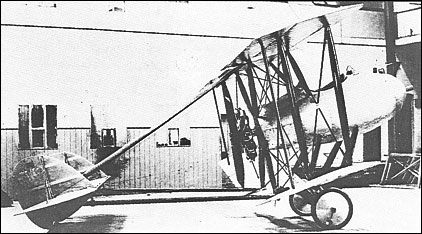|
| Designed in 1915 by Noel Pemberton-Billing, and built
by the company bearing his name, the P.B.23E single-seat
pusher fighting scout biplane was of wooden construction,
but the nacelle mounted between the wings
and accommodating the pilot was unusual for its time
in being covered with light alloy sheet metal. Armament
consisted of a single 7.7mm machine
gun mounted in the nose of the nacelle and power was
provided by an 80hp Le Rhone rotary. The P.B.23E was
first flown in September 1915, but was not adopted in its
original form, being further developed as the P.B.25.
| Trevor Webb, e-mail, 29.11.2014 14:34 It appears that the PB 23E was built on a request for an experimental scout from the Royal Naval Air Service. Although it appears never to have had a RNAS serial number it was tested by the RNAS and was developed into the PB 25. The wing structure seems similar to that of the PB 9 and may have the same origins. reply | | Trevor Webb, e-mail, 09.11.2014 14:33 It was known at the factory as the "Push-Proj" but its nickname was the "Sparklet". It may have also flown with a 100 hp Mono-Gnome rotary. reply | | Terrence I. Murphy, e-mail, 11.02.2012 02:11 Nope, I was wrong. I think the picture is the PB 23E. The P.B. 23, 25,and 26, all look alike. reply | | Terrence I. Murphy, e-mail, 11.02.2012 01:49 I believe the picture is that of the P.B.25."Push-prodge." It had a 100 hp Gnome engine that could power it at 100 mph. It was the fastest biplane of its day.
The Pemberton Billing PB 23E was powered by an 80hp Le Rhone engine. It was nicknamed the "Sparklet" as its nacelle resembled a Sparklet bulb. reply |
|
Do you have any comments?
|
| 
COMPANY
PROFILE |





